Lewes holds largest bonfire celebration
- Published
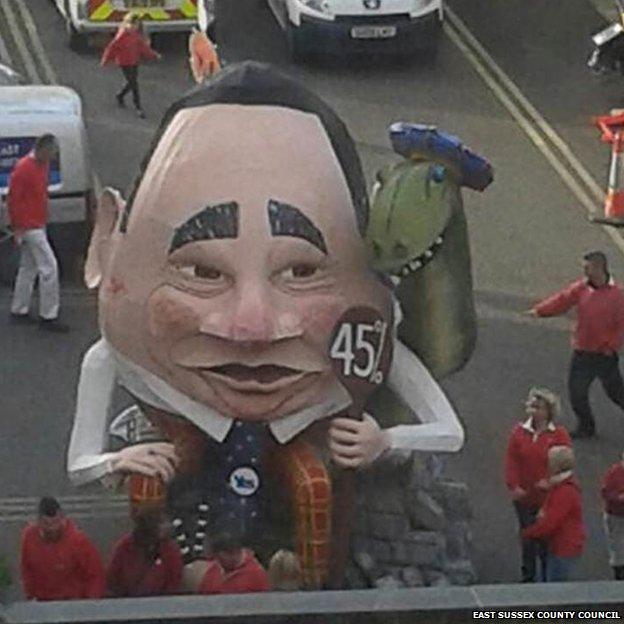
An effigy of Alex Salmond was withdrawn by the Waterloo Bonfire Society after protests on social media
Thousands of people have converged on the East Sussex town of Lewes for one of the UK's biggest bonfire events.
Two effigies of the outgoing Scottish First Minister Alex Salmond were withdrawn from the celebrations after a storm of protest on social media.
Six separate bonfire societies paraded through various parts of the town, external, all with their own traditions, costumes, fire sites and fireworks.
Non-Lewes residents were asked not to attend.
Police said anyone throwing fireworks would be "dealt with robustly".
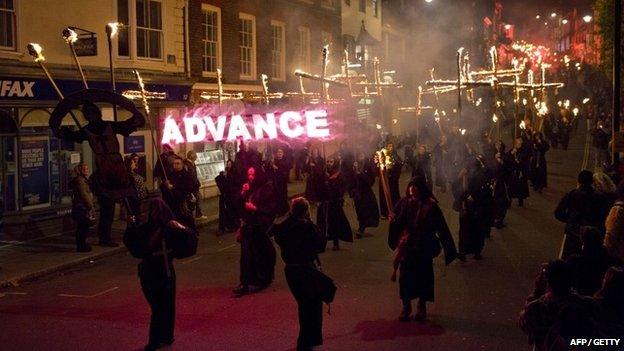
In total, there were more than 30 processions with flaming torches and burning crosses intermingling with each other through the narrow streets of the town.
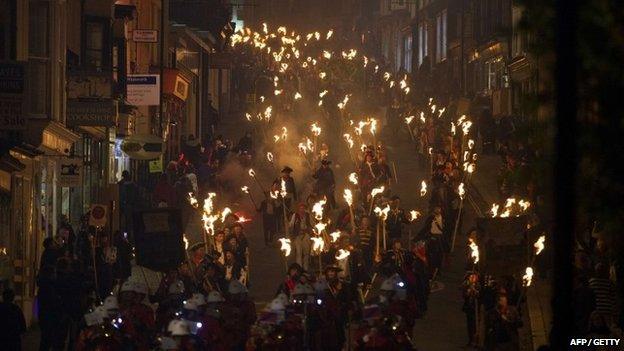
The main procession, The United Grand, started at about 19:40 GMT, after which each society held a bonfire at sites around the town followed by a firework display.

Lewes Bonfire Societies
Sussex is renowned for its spectacular bonfire events in the autumn, celebrating the failure of the Gunpowder Plot of 1605.
The largest event is held in Lewes, marking both the anniversary of 5 November and the burning of 17 Protestant martyrs at the stake in the 16th Century.
The town has seven bonfire societies which have a 4,000-strong membership - six of which hold their celebrations on the same night.
The remaining society, Nevill Juvenile, holds its event on a Saturday a couple of weeks before 5 November.
Some of the societies claim to date back to the 19th Century, and each one has a motto and its own stripey top and cap - known as "smuggler colours".
The societies spend months preparing giant effigies, and organising the processions, which involve flaming torches and burning crosses.
Organisers say the event has "deep historical significance".

Lewes District Council said the event was meant for "the residents of Lewes only" and was not set up "to handle large crowds with its narrow streets and limited access into and out of the town".
In an attempt to ensure the safety of those attending, it said the event was not suitable for children, and was "not a firework display as people expect".
"We are advising people to take responsibility for their own safety," the council said.
"We are working with the bonfire societies and other agencies to reduce accidents... in previous years there has been a problem with 'rookies' causing serious eye injuries.
"We are keen to promote the use of eye protectors (and ear defenders) and discourage the throwing or dropping of fireworks either in the crowds or in the processions."
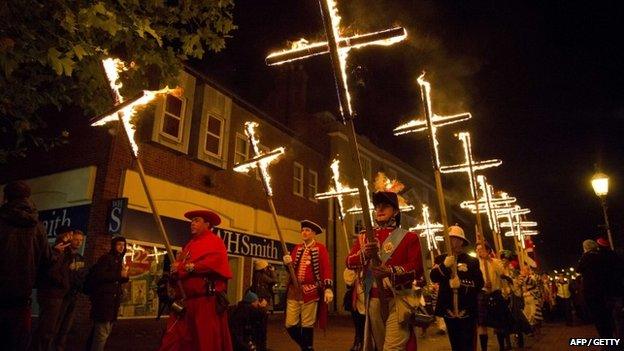
The council also stressed that while there were fireworks later in the evening at designated bonfire society sites, the main focus of the event was the processions.
On-street parking was suspended on certain streets in the town, while some roads will be closed, external until 03:00 GMT.
Any parked cars were being towed away.
Southern Railway said it was operating a normal scheduled service, external to and from Lewes but warned evening trains would be very busy, with the last trains leaving just before midnight.
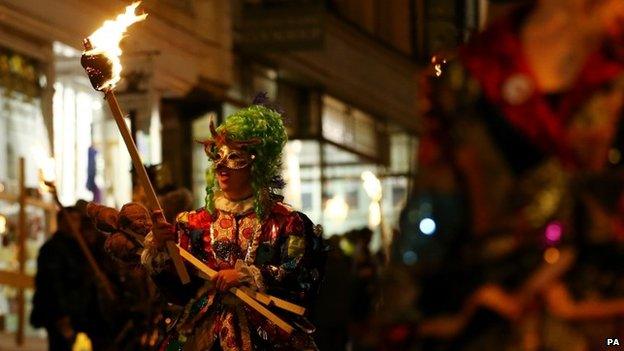
Last year, 86 people were treated by ambulance crews and 14 people arrested, with two people detained for throwing fireworks.
The event commemorates the Gunpowder Plot and 17 protestant martyrs who were burned at the stake in the town in the 16th Century.
- Published6 November 2014
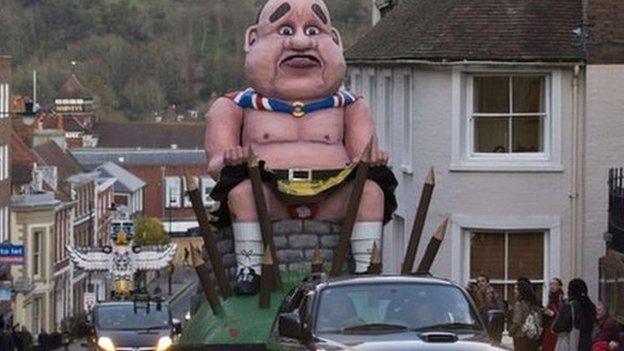
- Published1 November 2014
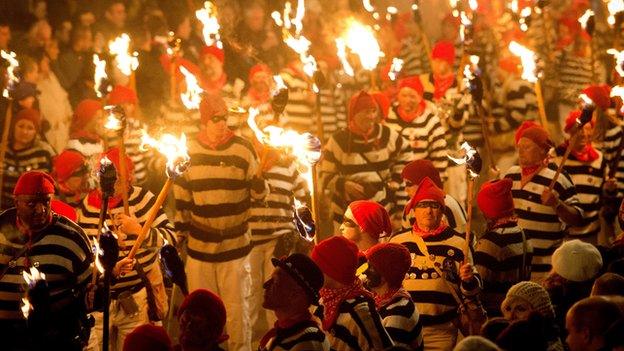
- Published30 October 2014
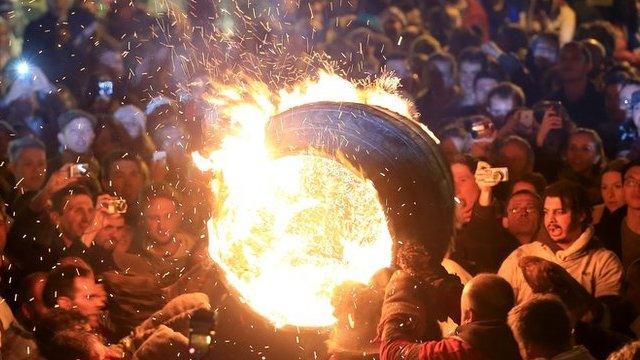
- Published6 November 2013
